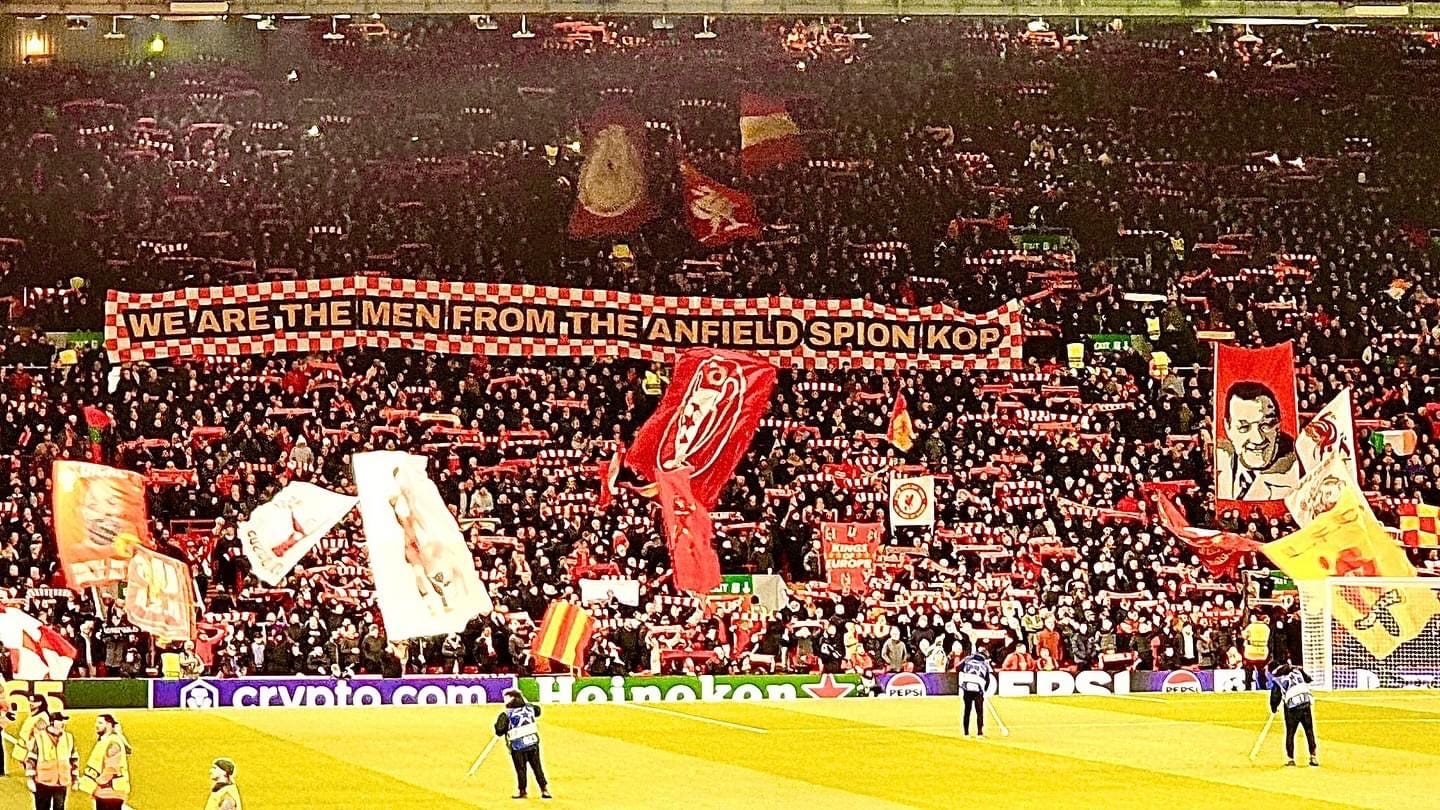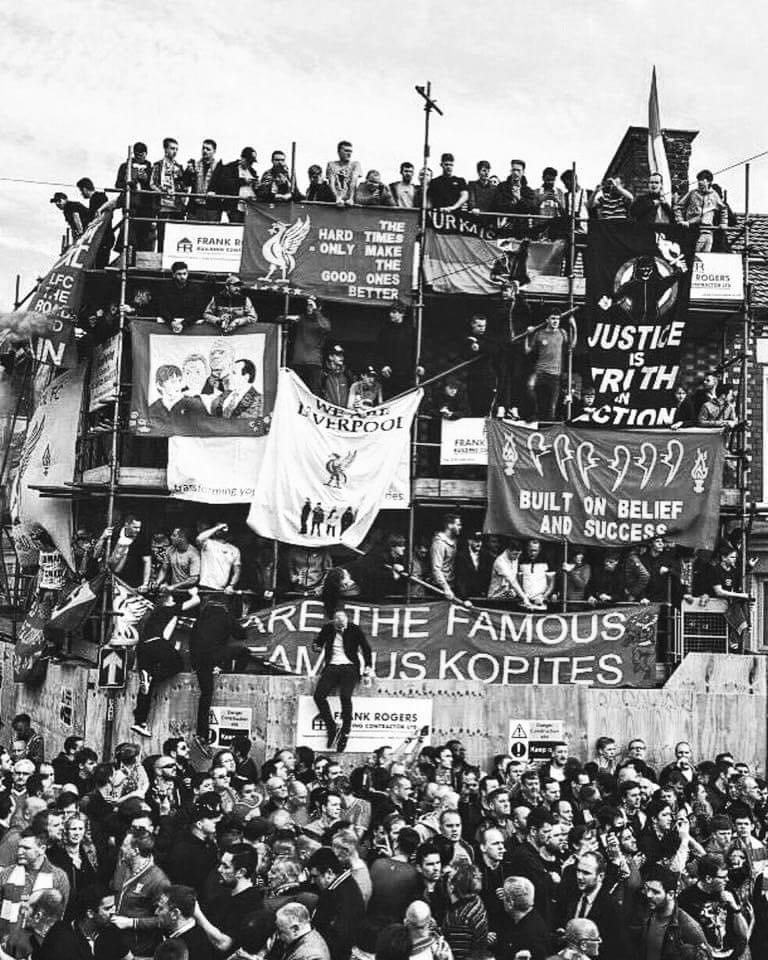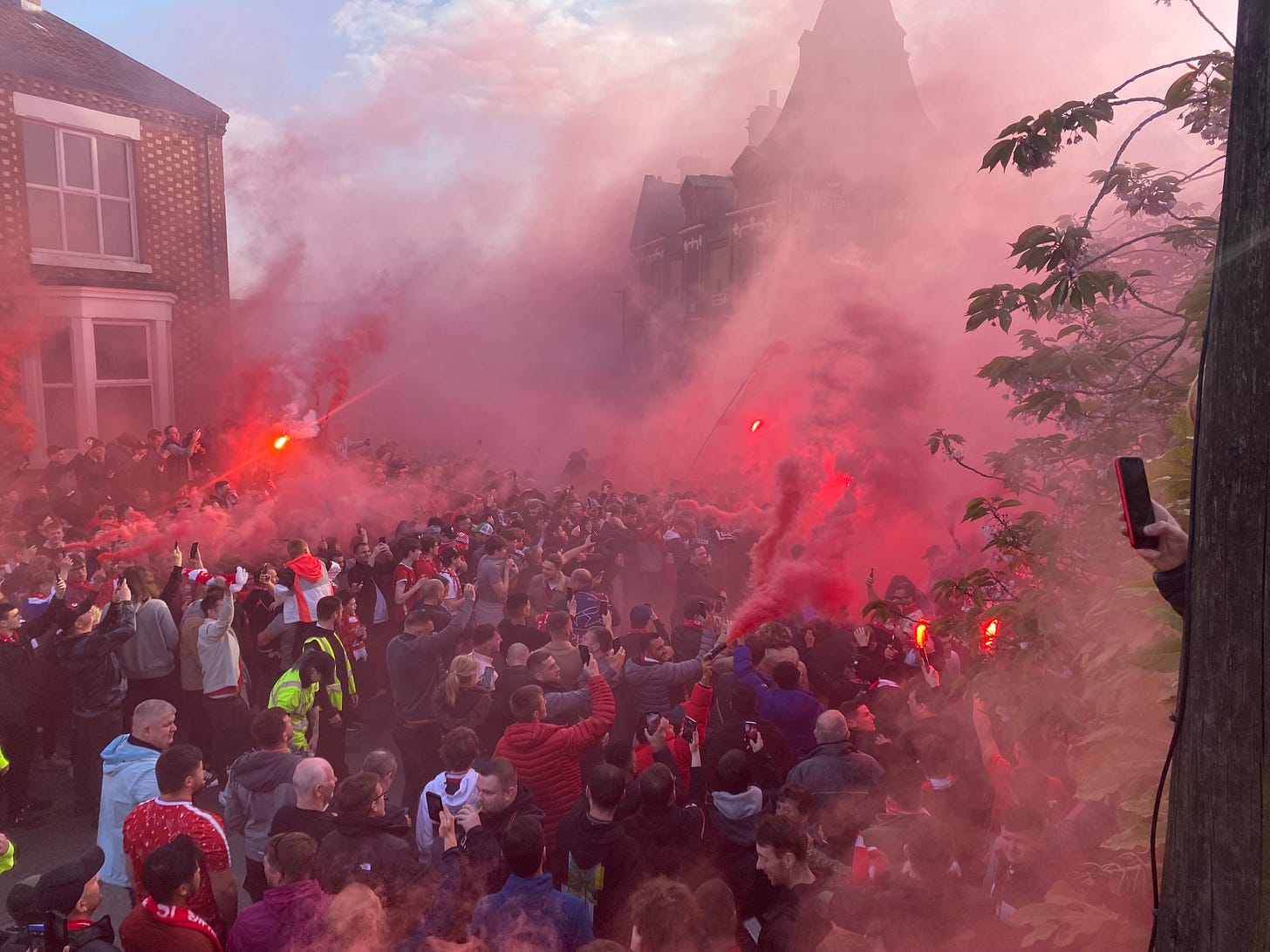Anfield’s Magic: Myth or reality
Anfield’s roar is more than sound—it’s a force woven into Liverpool’s identity, a symbol of resilience and defiance that echoes the city itself. We speak with pride about being the twelfth man, the heartbeat of the club, standing shoulder to shoulder to make Anfield a fortress no opponent wants to face. The roar of the Kop embodies the resilience, defiance, determination, and solidarity that define not only the club but the city and its people. But is that roar just history, or is it something we bring to life every match, every moment? As fans, we’re more than spectators—we’re part of Liverpool’s story, and it’s up to us to carry that magic forward.
The Anfield Factor: Myth or Reality?
Anfield’s energy is infectious. Opponents fear it, and our players thrive off it. It’s a cauldron of passionate, working-class support, rooted in a history of overcoming adversity. From European nights under the floodlights to title-deciding battles, Anfield has always been more than a stadium—it’s a fortress, a symbol of the collective spirit that unites fans, players, and the community.
The power of Anfield is something even the world’s greatest players can’t ignore. After the famous Barcelona game in 2019, Andrés Iniesta reflected, “We couldn’t hear ourselves think. The Anfield crowd was so loud and intimidating that it affected our rhythm. We never experienced anything like it.” Dani Alves echoed this, calling it “like facing an army with the Kop behind them.” Even Lionel Messi admitted the crowd “created pressure like [he’s] never experienced before.” These are remarkable words from a player who’s won the Ballon d’Or eight times.
And it’s not just opponents who feel Anfield’s power—coaches do too. Pep Guardiola once admitted he didn’t initially find Anfield daunting, only to realise he was wrong. Later, he described it as “one of the best atmospheres” he’d ever witnessed. These voices of experience reinforce what Liverpool fans already know: Anfield’s atmosphere isn’t a myth; it’s a reality we create.
Big Nights and the Power of the Crowd
So why do some opponents dismiss it as a myth, and more importantly, why do our own fans sometimes criticise Anfield’s atmosphere?
Some point to the demographics inside the ground: early kick-offs at 12:30 pm, fewer local fans, ageing season-ticket holders, the impact of modern football, or simply how hard it is to sit next to your mate. In truth, it’s all of these factors and more.
But above all, English football fans are reactionary. Unlike in Germany for example, where fans rely on drums and a lead orchestrator to rally the crowd, English fans—especially Liverpool fans—respond to what happens on the pitch. It’s part of the city’s identity: Scousers are resilient and defiant, so when the chips are down, that’s when the Kop truly comes alive. We’re not supposed to be a soundtrack of background noise.
We felt that recently against Brighton, during Liverpool’s poorest first-half performance of the season. This stirred a fierce response from the crowd. An angry Anfield is the best Anfield, some might argue. Mikel Arteta and Frank Lampard found that out in recent seasons, as their teams’ chances of getting a result at Anfield evaporated within minutes of waking the Anfield crowd up.
The Reds have now scored within 2-3 minutes of each other on six different occasions at Anfield in critical games since December 2021. That’s the Anfield factor, an inevitability; the energy from the crowd takes you on a ride. It’s what happened against Leverkusen in the following game. A tightly contested first half was met by a fierce second-half performance from both the Reds and the crowd, sweeping Alonso’s men off their feet.
In his post-match interview, Xabi Alonso explained what went wrong on the night, and while acknowledging Anfield’s influence, he appeared respectful but reluctant to fully credit it. Rather, he seemed to think the critical moment was his side simply couldn’t keep it at 1-0 long enough to get a foothold. Yes, Xabi—that was the Anfield factor.
To put the Leverkusen result into perspective, the German champions had only lost two games in all competitions since Jordan Henderson last played for Liverpool, so this cannot be underestimated. This was followed by Aston Villa at home—a Saturday night under the lights. City had lost their second consecutive Premier League game away to Brighton, and Liverpool were about to go five points clear at the top of the league. Everyone inside the ground felt the inevitability of it, and the atmosphere was electric.
Complacency: A Warning for Fans
But before that glorious week of three top-class home wins and crowd performances, critical questions filled social media, podcasts, and local radio shows. People blamed non-Scousers, early kick-offs, and many more. For me, the biggest issue is complacency. Success in recent years has perhaps made us expect the Anfield atmosphere to create itself, forgetting that it’s something we all build, every match.
Take the 2016 Europa League quarter-final against Dortmund, one of Anfield’s most famous nights. Now fast forward to the 2024 Europa League quarter-final against Atalanta. Although the results were different, so was the experience, from the coach’s arrival to the crowd’s anticipation. Champions League nights have overshadowed the Europa League’s value, and fans simply didn’t bring the same energy. We had become spoilt. Three Champions League finals in the intervening years will do that to you.
The same can be said of the atmosphere at Liverpool’s Champions League semi-finals. Roma in 2018 and Barcelona in 2019 were iconic atmospheres; in contrast, Villarreal in 2022 was disappointingly flat. Instead of excitement, there was an expectation, which diluted the crowd’s energy. I couldn’t believe I was at a Champions League semi-final. These quieter nights raise the question: Is Anfield’s magic fading, or are we taking it for granted?
Proactive vs. Reactive Support: Carrying Anfield’s Magic Forward
As I’ve travelled to other matches as a neutral recently, I’ve thought about Anfield’s atmosphere and noticed there are two types of fans: proactive and reactive. And which type is best? My conclusion is we need to be both. Liverpool fans thrive in adversity, that’s unquestionable. But there’s something uniquely powerful about creating that energy before the first whistle, intimidating opponents from the outset.
Sometimes, it’s those quieter moments that stick with you the longest—the moments when we, as fans, didn’t take control of the atmosphere. I always felt a sense of regret from the 2018-19 season, and probably not from the game you’d expect. It was 30th January on a Wednesday night, when we missed the opportunity to be proactive. The fans, frustrated, waited for something to happen instead of creating the energy to push the team forward. That’s a moment that still lingers.
Both Liverpool and the Anfield crowd had a whole second half to make it count. But the cauldron of noise never came. Instead, we let the game drift, and Liverpool drew with Leicester City that night. Why wasn’t the crowd proactive? Instead of waiting for a spark, we should have been the spark.
Maybe others will disagree with my analysis of that night, but I’m still waiting to see Liverpool (in person) lift the league title for the first time. I don’t want us to look back on a missed opportunity in May, reflecting on a quiet Anfield that could have been the difference. As fans, we are as much a part of Liverpool’s story as the players on the pitch. It’s not about complacency or expecting moments of brilliance; it’s about being that constant, that heartbeat, that makes the impossible possible. Every game, every chant, every moment matters. Because when we’re united, standing shoulder to shoulder in voice and spirit, that’s when Anfield becomes a fortress, a place no opponent wants to face.






